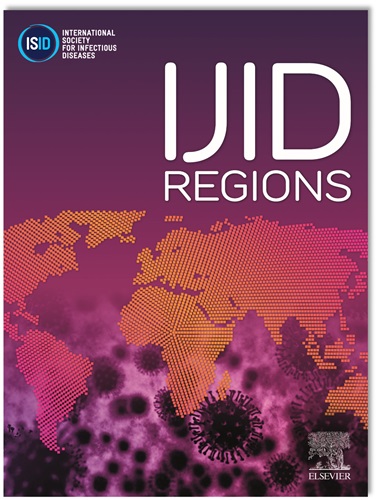Refining early detection of Marburg Virus Disease (MVD) in Rwanda: Leveraging predictive symptom clusters to enhance case definitions
IF 4.8
2区 医学
Q1 INFECTIOUS DISEASES
引用次数: 0
Abstract
Background
Marburg Virus Disease (MVD) poses a significant global health risk due to its high case fatality rates (24%-88%) and the diagnostic challenges posed by its nonspecific early symptoms, which overlap with other febrile illnesses like malaria. This study analyzed symptom patterns from the 2024 MVD outbreak in Rwanda to refine case definitions and enhance early detection.
Methods
A retrospective analysis was conducted of 6613 suspected MVD cases (66 positive, 6547 negative) reported between September 27 and December 20, 2024. Symptom prevalence and predictive value were assessed using multiple logistic regression models with L1 and L2 regularization to identify the most predictive symptoms. Models were validated using 5-fold cross-validation, with performance assessed through ROC analysis and standard accuracy metrics.
Results
Fever (78.8%), fatigue (63.6%), and headache (57.6%) were identified as the most common early symptoms, while hemorrhagic signs were rare (3.0%). The model achieved high accuracy (99.04%) and an area under the receiver operating characteristic curve of 0.824, identifying fever, fatigue, nausea/vomiting, joint pain, and sore throat as key predictors.
Conclusion
Early symptom clusters, especially constitutional and gastrointestinal signs outperformed hemorrhagic symptoms for MVD detection. Findings challenge current case definitions, emphasizing the need for revised public health messaging and healthcare worker training. Integrating symptom-based models into surveillance could enhance detection, especially in resource-limited settings.
改进卢旺达马尔堡病毒病(MVD)的早期检测:利用预测性症状聚集来加强病例定义。
背景:马尔堡病毒病(MVD)由于其高病死率(24%-88%)和其与疟疾等其他发热性疾病重叠的非特异性早期症状带来的诊断挑战,构成了重大的全球健康风险。本研究分析了卢旺达2024年MVD暴发的症状模式,以完善病例定义并加强早期发现。方法:对2024年9月27日至12月20日报告的6613例MVD疑似病例(阳性66例,阴性6547例)进行回顾性分析。使用L1和L2正则化的多重逻辑回归模型评估症状患病率和预测值,以确定最具预测性的症状。采用5倍交叉验证对模型进行验证,并通过ROC分析和标准准确度指标评估模型的性能。结果:发热(78.8%)、疲劳(63.6%)、头痛(57.6%)是最常见的早期症状,出血症状少见(3.0%)。该模型获得了很高的准确率(99.04%),AUC-ROC为0.824,确定发烧、疲劳、恶心/呕吐、关节痛和喉咙痛为关键预测因子。结论:早期症状群,特别是体质和胃肠道体征优于出血症状检测MVD。研究结果挑战了目前的病例定义,强调需要修订公共卫生信息和卫生保健工作者培训。将基于症状的模型纳入监测可以加强检测,特别是在资源有限的情况下。
本文章由计算机程序翻译,如有差异,请以英文原文为准。
求助全文
约1分钟内获得全文
求助全文
来源期刊
CiteScore
18.90
自引率
2.40%
发文量
1020
审稿时长
30 days
期刊介绍:
International Journal of Infectious Diseases (IJID)
Publisher: International Society for Infectious Diseases
Publication Frequency: Monthly
Type: Peer-reviewed, Open Access
Scope:
Publishes original clinical and laboratory-based research.
Reports clinical trials, reviews, and some case reports.
Focuses on epidemiology, clinical diagnosis, treatment, and control of infectious diseases.
Emphasizes diseases common in under-resourced countries.

 求助内容:
求助内容: 应助结果提醒方式:
应助结果提醒方式:


